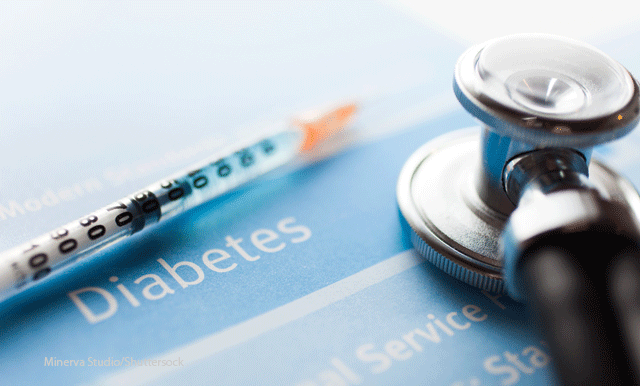The Oncology Care Model and Its Successor
Although the Oncology Care Model produced some positive results, the value-based care model cost Medicare money. Now attention is turning to its successor, the Enhancing Oncology Model.
The Oncology Care Model (OCM) was introduced in 2016 by the Centers for Medicare & Medicaid Services (CMS) in an effort to improve the quality and coordination of care for cancer patients. It aimed to do so by bundling payments for care and encouraging collaboration among providers. Practices could bill Medicare for a $160 monthly enhanced oncology service (MEOS) for each beneficiary receiving chemotherapy. The participating practices were also eligible for retrospective performance-based payments (PBPs) that were measured by financial benchmarks and quality metrics.
The program, which ended in June of this year, included 126 practices and five payers. The latest evaluation report of the program, which came out in December 2021, covered six performance periods starting July 1, 2016, and ending July 1, 2019. The report showed that practices participating in the OCM spent an average of $298 less per episode than a comparison group of practices not participating in the model. The reduced spending was concentrated in the care of lung cancer, lymphoma, colorectal cancer and high-risk breast cancer patients. However, the $487-per-episode difference in spending on those cancers was offset by higher spending on lower-risk cancers.
Moreover, the evaluation report found that once the MEOS and PBPs to the participating practices were factored in, the OCM program cost, rather than saved, the Medicare program. During the first five performance periods (July 1, 2016, through Jan. 1, 2019), the net cost to Medicare totaled $377.1 million, according to the evaluation report. In no performance period did the savings in per-episode payments exceed the MEOS and PBPs.
The Oncology Institute of Hope and Innovation (TOI) is one of the largest value-based oncology groups in the U.S. “We believe OCM was highly successful,” says Matt Miller, M.D., MBA, chief operating officer of TOI. “As firm believers in the benefits of value-based care, we support the premise of the OCM and see it as evidence that providing excellent outcomes while maintaining sustainable costs is possible. Through participation in OCM, more practices had the opportunity to implement best practices of value-based care and see the potential for impact on patients and the healthcare system at large.”
But Carole Tremonti, MBA, R.N., vice president of clinical strategy for Project Ronin, a healthcare analytics and software company in San Mateo, California, says OCM didn’t produce results as hoped for
several reasons.
“The first is that it was a concept without a process or method to apply it. It left health systems to figure out how to make a complicated process work, without necessarily a means to do so,” she says. “Where that becomes even more complicated is that in the space of oncology, there are multiple players involved in the treatment of a patient, plus their primary care doctor, who is not necessarily in close connection with the medical oncologist, nor do they have access to the same medical record. At baseline that puts the whole process at a disadvantage.”
Tremonti also points to the problem of measurement. “All health systems and providers have challenges in measuring population-level data,” she argues, adding that “the EHR (electronic health record) does not make it easy to do so, nor are these systems skilled in population-level statistics. To complicate this process, patients move. They do not necessarily get care in the same location or system.” For example, a patient may go to an emergency department (ED) or urgent care setting outside of the knowledge or data collection of their medical oncologist, making it difficult to intervene, she says, and mentions the “complicated space of patient/provider communication.”
François de Brantes, senior vice president of episodes of care at Signify Health and a member of the Managed Healthcare Executive® editorial advisory board, believes OCM was an important pilot to demonstrate how to involve specialty care providers.
“It showed that when specialty practices are engaged directly in an alternative payment model — as opposed to indirectly through a total population costs-of-care model — they start transforming their practice and improve patient outcomes,” he says. “It also showed that upside-only models are never budget-neutral for a payer.”
There is evidence that OCM has some beneficial effects on care. For example, one study found that the model led to a decrease in the use of resources such as hospital admissions and emergency department (ED) visits and an increase in the use of preventive services. It has also been found to improve communication among providers and lead to more coordinated care.
“The biggest impact the OCM had was to compel the systematic collection and reporting of patient-level data and matching costs to those patients,” de Brantes says. “That feedback that matched clinical data with claims data is really essential in gaining insights for complex conditions such as cancer, and the practices in the program learned a lot about the variations in treatments, treatment costs and patient outcomes.”
Miller notes that by sharing responsibility for the total cost of care for a patient, OCM incentivizes programs that better serve patients by focusing on prevention and managing symptoms.
“Patient navigators and symptom assessment proved to be extremely beneficial, reducing ED visits and the associated risks and costs,” he says. “Additionally, participating practices benefitted from the rich data provided by OCM. At TOI, we have used that data to continuously improve quality measures and would imagine other practices are doing the same.”
TOI saved Medicare approximately $4,000 per episode in the most recent performance period, according to Miller. “This is especially notable given the relatively small percentage of our patients that qualify for the program,” he says. “TOI is already implementing similar measures through the managed care and capitated contracts that make up the majority of our practice.”
Ashley Tait-Dinger, MBA, director of analytics, alternative payment models and finance for Florida Alliance for Healthcare Value, believes OCM was effective because it incorporated additional services and touch points that were not addressed under the traditional care model. How providers implement these services and how they are paid for are issues that need to be addressed, she says.
The successor
The final performance period of OCM ended on June 30, 2022. One of the options CMS’ Center for Medicare & Medicaid Innovation (CMMI) considered was simply sticking with OCM but making it a two-sided risk model, which means practices could face financial penalties if they don’t meet financial and quality benchmarks. “That created an immediate and very negative reaction from oncologists across the U.S.,” de Brantes says. “They objected to the downside risk given the design of the model, which included all costs of care for the beneficiary, not just the cancer costs, and also included chemotherapy costs. As such, the Oncology Care First (OCF), as it was called, was put on hold.” The assumption of downside risk — when and how much — has been a major issue with other value-based pay arrangements, including accountable care organizations.
On June 27, CMS announced the successor program, which it is calling the Enhancing Oncology Model (EOM). Despite the misgivings about downside risk, EOM includes downside risk right from the start, although there are two tracks.
In broad outlines, EOM is much like OCM. It will be voluntary not mandatory (some experts say voluntary programs won’t be effective in bringing about value-based care). EOM has same basic structure of six-month care episodes. Practices will still get MEOS payments for providing enhanced services, although as proposed they would $70 per month rather than $160, and be eligible for PBPs.
However, there are also some important differences. EOM will cover Medicare patients undergoing chemotherapy for the most common types of cancer (lung, breast, multiple myeloma and so on). However, according to a commentary by Stephen Schleicher, M.D., MBA, chief medical officer of Tennessee Oncology, EOM excludes cancers treated with hormone-only therapies, such as low-risk breast cancer. Schleicher said that narrowing the cancer treatments that are covered may prevent some of the variability seen in OCM based on case mix.
EOM also includes some new requirements for electronic patient reported outcomes, patient-provided data about side effects and adherence that is supposed to improve care by creating a continual feedback loop of information. Schleicher said that addition was welcome but also sounded a note of caution about adding reporting burdens on practices.
In its fact sheet about EOM, CMS emphasized that providers participating in the payment model will need to screen patients for health-related social needs (HRSNs), such as lack of transportation to infusion appointments, that may contribute to disparities among cancer patients. The HRSN screening requirement is part of the Biden administration’s push to have CMS programs of all kinds factor in healthcare disparities and ways to address them.
CMS is accepting applications for EOM through the end of September 2022. The program, which as proposed will run for five years, is not scheduled to start till July 2023. Some provider groups said the yearlong gap between the end of OCM and beginning of EOM will be a hardship because practices will be shouldering costs without the model’s benefits.
Miller, speaking before EOM came out, predicted that health equity would be front and center: “I expect to see an increased emphasis on health equity, which would be a welcome addition and a natural progression to ensure these programs are working for all patients.”
John Griggs, senior manager of solutions consulting at Managed Markets Insight & Technology, said prior to the EOM announcement that clearer guidelines and continual education for all key stakeholders are needed. “This would allow for quicker adoption and stricter enforcement,” he said “And once implemented, clear metrics must be defined for tracking the success and reporting outcomes from the programs by both payers and oncologists.”
Keith Loria is a freelance medical writer in the Washington, D.C., area.
Analysis Finds Brukinsa May Provide Costs Savings Over Imbruvica in CLL
April 14th 2025In a statistical analysis, Brukinsa resulted in fewer cases of disease progression or death and resulted in lower overall healthcare costs than Imbruvica in patients with chronic lymphocytic leukemia.
Read More
Using the 'Pathway' Approach to Shorten the Time Between Cancer Diagnosis and Treatment
November 16th 2022In this episode of Tuning In to the C-Suite, Briana Contreras, editor with Managed Healthcare Executive spoke with Dr. Yuri Fesko, oncologist and vice president of Medical Affairs at Quest Diagnostics. In the conversation, Dr. Fesko addressed the ongoing issue of long gaps of times between receiving a diagnosis for a type of cancer and finally getting the treatment for it. Dr. Fesko shared the benefits a number of sectors receive when treating patients sooner and the steps to get there.
Listen
Rutgers Cancer Institute Reviews Guidelines for Managing Blood Cancers During Pregnancy
April 8th 2025About 6% of pregnancy-related cancers are Hodgkin lymphoma, and 5% are non-Hodgkin lymphoma. Leukemias in pregnancy are rarer, accounting for 1 in 10,000 pregnancies. The most common pregnancy-related leukemias are acute myeloid leukemia (AML), acute lymphoblastic leukemia (ALL), and chronic myeloid leukemia (CML).
Read More
Microplastics, Diet and More: What’s Causing Early-Onset Cancer?
March 18th 2025In a February 2025 Time magazine cover story, Jamie Ducharme reports on this atypical and disquieting trend. Ducharme cites a 79% increase in early-onset cancer diagnoses and a 28% increase in cancer-related deaths in this age group from 1990 to 2019.
Read More



















